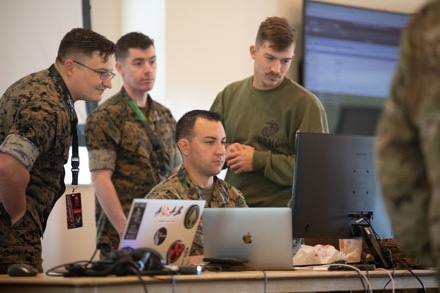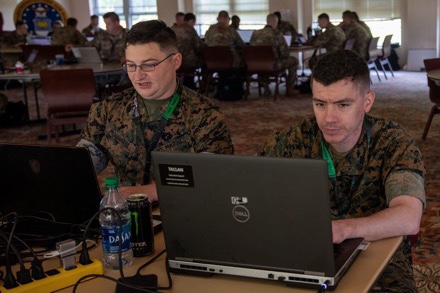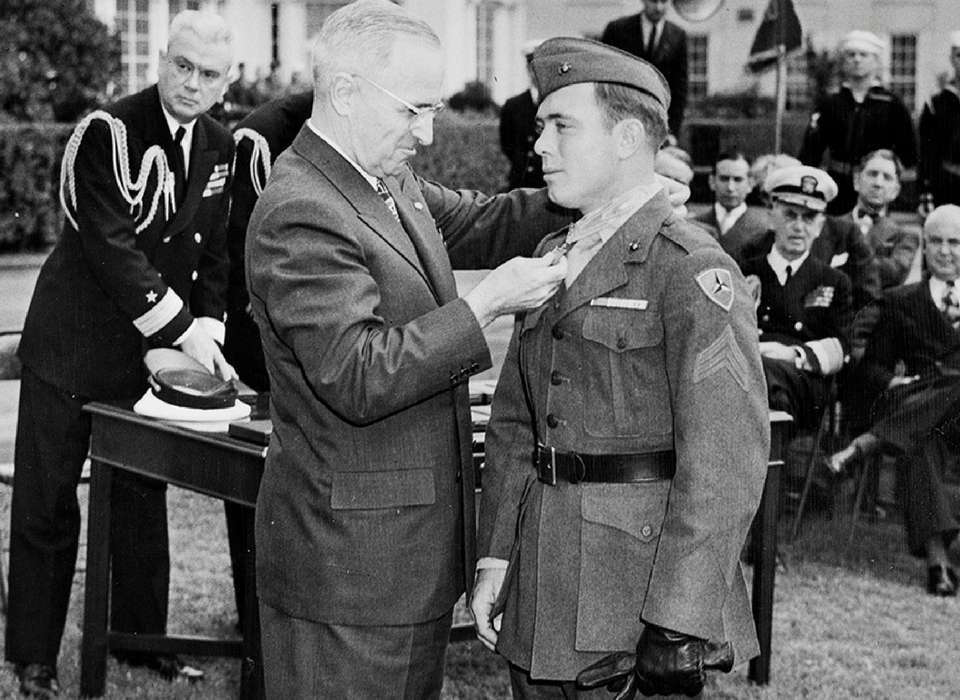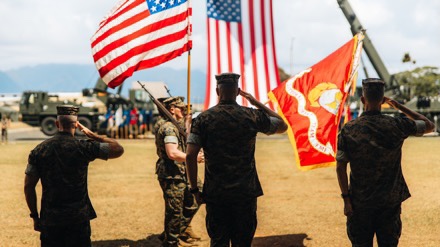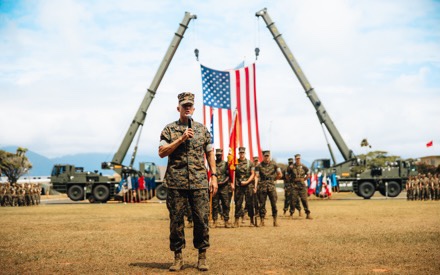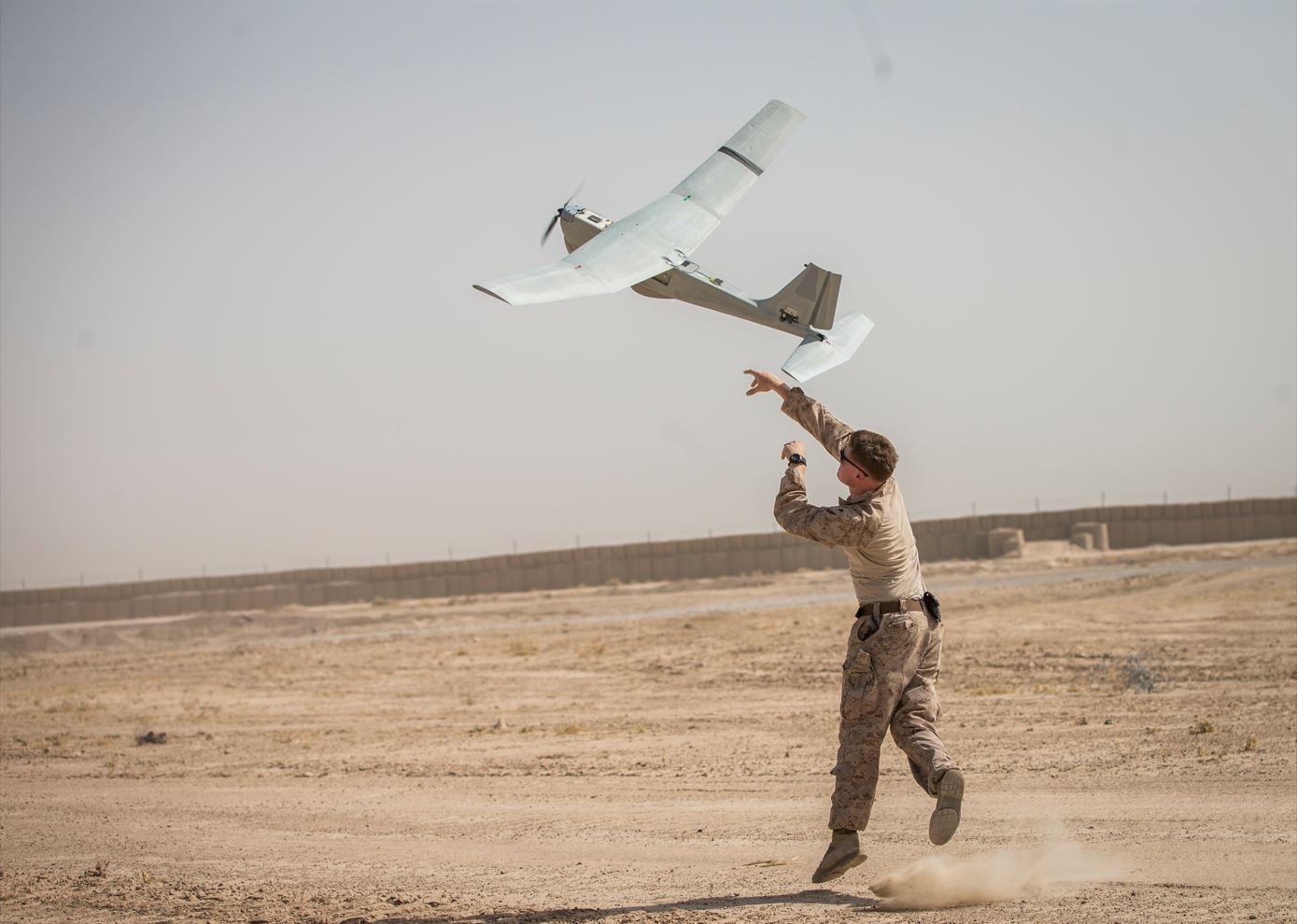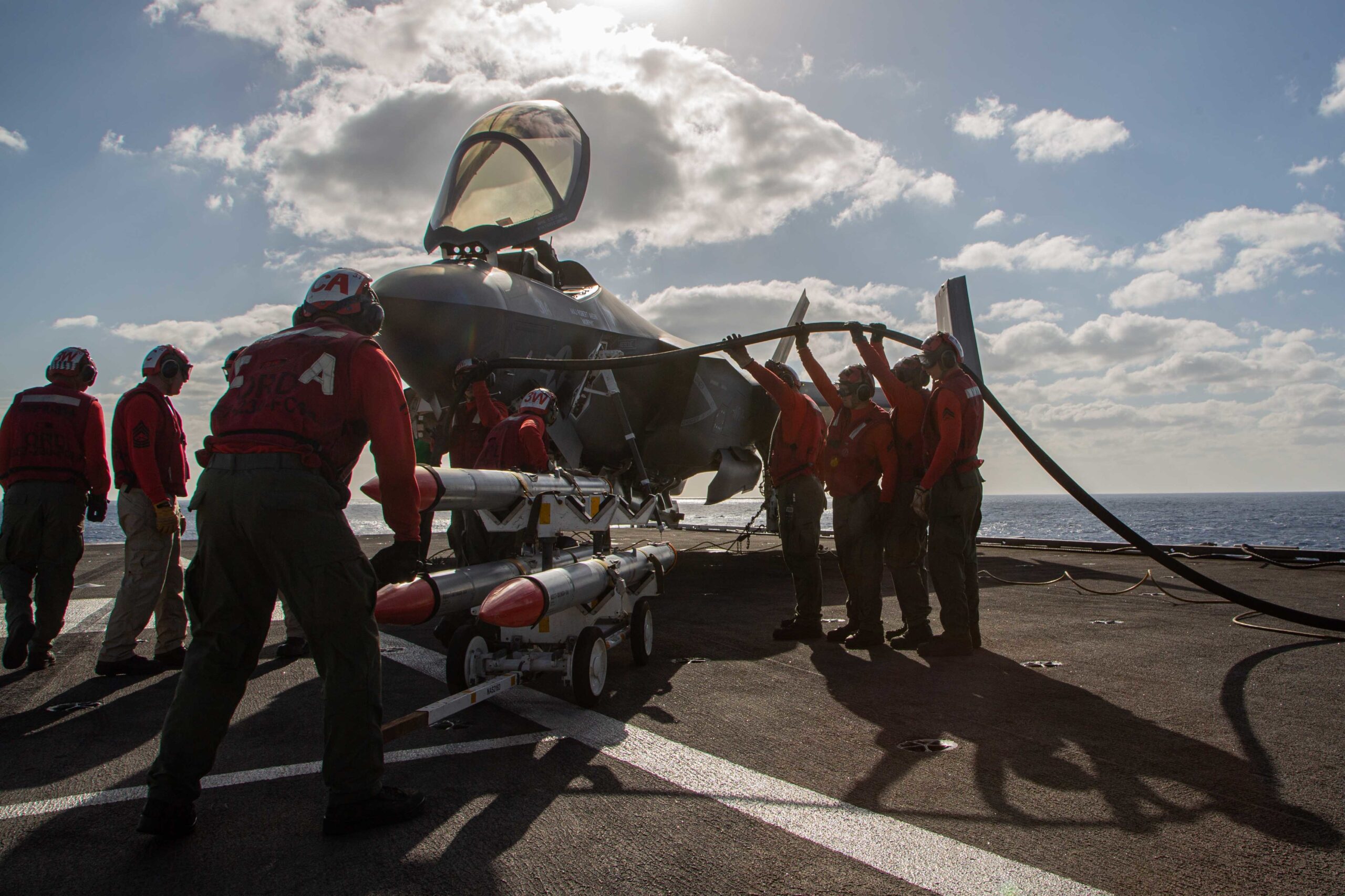CAMP LEJEUNE, NC —
It was a hot day at Camp Lejeune while a Marine Special Operations Company conducted a portion of their pre-deployment readiness exercise. In the distance, Marine Raiders conduct a gear check as they prepare for the next segment of their training. In the foreground sat Capt. Charles J. Bauman and to his left, Capt. Michael Reynolds, as both expertly maneuver their choice of drawing tools across their sketch pads, illustrating the story unfolding right before them.
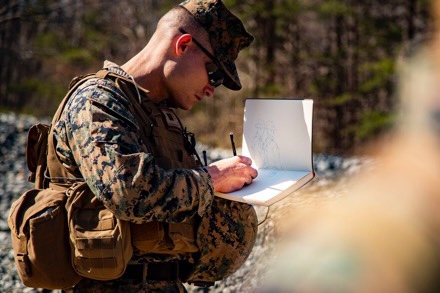
Capt. Charles Baumann, a designated combat artist and logistics officer with Marine Wing Support Squadron 271, and Capt. Michael Reynolds, ammunition officer with Marine Forces Special Operations Command, document a pre-deployment culminating exercise while attached to a Marine Special Operations Company, June 13-16, 2022.
“The purpose of the [Marine Corps Combat Art Program] is to document Marine Corps operations via illustration for historical documentation,” explained Baumann. “I hope to contribute to the collections of work archived in the [National Museum of the Marine Corps] and provide a slightly different perspective to viewing the recorded history of the Marine Corps. I hope that in 10, 20, 50 years my artwork can be used to help tell the story of the Corps while I was in service.”
“The purpose of the Marine Corps Combat Art Program is to document Marine Corps operations via illustration for historical documentation.”
Capt. Charles Baumann, Designated combat artist and logistics officer
Baumann, initially, was not aware of the Marine Corps Combat Art Program. Once he became aware of the program, he reached out to retired Chief Warrant Officer 2 Michael D. Fay who was the last activated reserve combat artist during the early Iraq War years who then introduced him to retired Col. Craig H. Streeter, also a combat artist. Streeter then introduced Baumann to the NMMC’s director, deputy director and art curator, who encouraged him to submit a portfolio of artwork. They deemed Baumann’s artwork skilled enough to bring him into the program and he attained the free military occupational specialty of combat artist.
Combat artist is a free military occupational specialty that can be filled by any Marine regardless of primary MOS in addition to their regular duties. They illustrate military operations on behalf the Marine Corps’ historical collection efforts as their schedule allows and is intended to capture military operations from an organic point of view.
“Once I realized I could combine my passion [and] skill for art and my calling to serve in the USMC, I was immediately inspired to see my military experience as medium to be illustrated,” said Baumann. “My initial body of work that was submitted as a portfolio was praised by people I respected and admired as veteran artists, which had a huge impact on my self-confidence and determination to develop my skill.”
Reynolds is currently applying to join Baumann as a combat artist for the Marine Corps Combat Art Program.
“I can directly attribute my desire to become a combat artist to the influence of Marine Corps Combat Artists like Capt. Baumann and former Staff Sgt. Elize Mcelvey,” said Reynolds. “Just as in marksmanship, if you have the foundational understanding of what is supposed to happen and have the ability to receive and grow from constructive criticism, you can consistently get better with more practical application.”
“Just as in marksmanship, if you have the foundational understanding of what is supposed to happen and have the ability to receive and grow from constructive criticism, you can consistently get better with more practical application.”
Capt. Michael Reynolds, Ammunition officer
Baumann was coached early on by Fay, Streeter and Richard Johnson, a civilian field illustrator, to draw from observation and life-to-life experiences. Once he grasped the concept of illustrating by direct observation, new opportunities came with the confidence to draw what he observed in person. He now keeps a sketch pad and camera on hand for any opportunities that may arise worth illustrating.
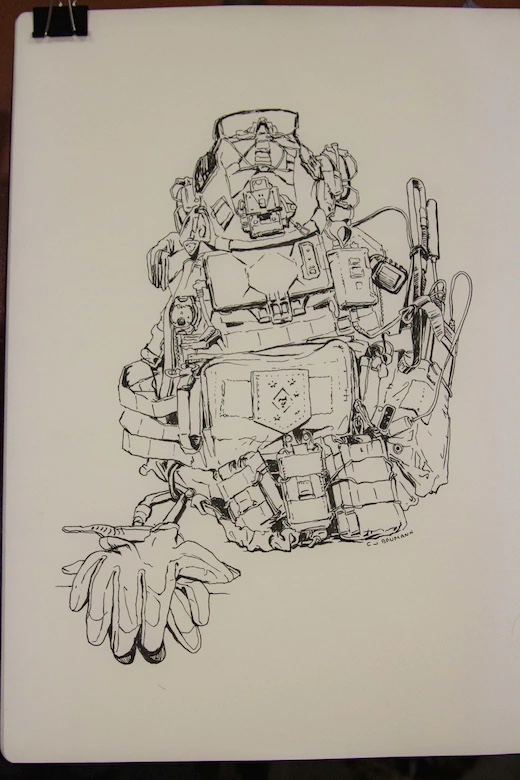
“I hope my art is able to connect with the viewer in an emotional and personal way,” expressed Baumann. “I want my civilian audience to gain an appreciation for the details of what it means to serve in the military. I feel like I can provide an insider perspective as both the illustrator and active-duty service member.”
Reynolds shares what he hopes to accomplish with his art.
“When observing artwork by former Marine Corps combat artists like retired Chief Warrant Officer Mike Fay, I’m brought back into the scene I’m looking at,” said Reynolds. “I recall the smell of JP8, the feel of moondust beneath my boots, and the sounds of the rumbling engine of the Humvee in the distance. It’s that level of connection that I am to achieve in hopes that someday, someone can recall and connect with what I’ve illustrated to tell a story using non-verbal communication.”
The NMMC is currently taking applications from artistically talented Marines to serve as combat artists. For more information on the program and how to apply, refer to MARADMIN 267/22.
Sgt Jesula Jeanlouis, Marine Corps Forces Special Operations Command





